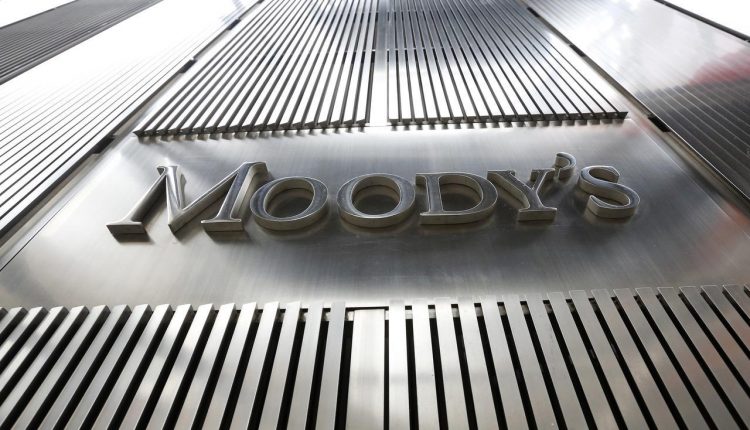Limassol, March 12, 2024
— Moody’s Ratings (Moody’s) has today affirmed all ratings and assessments of the five rated Egyptian banks, including the Caa1 long-term deposit ratings of National Bank of Egypt SAE (NBE), Banque Misr SAE (BM), Banque du Caire SAE (BdC) and Commercial International Bank (Egypt) SAE (CIB); and the B3 long-term deposit ratings of Bank of Alexandria SAE (BoA). As part of the same rating action Moody’s has changed the outlook on the banks’ long-term deposit ratings to positive from negative.
The rating action follows Moody’s decision to affirm Egypt’s Caa1 rating and change its outlook to positive from negative (please see “Moody’s changes outlook on Egypt to positive, affirms Caa1 ratings”, 7 March 2024, https://ratings.moodys.com/ratings-news/416475). The change in outlook to positive reflects the very large foreign direct investment contribution by the United Arab Emirates, and the marked change in economic policy with a large devaluation of the currency and increase in interest rates that, if maintained, will help Egypt maintain an upsized IMF program.
— POSITIVE OUTLOOK
The change to positive outlook from negative on the long-term deposit ratings follows a similar rating action on the sovereign rating, which reflects the significant official and bilateral support announced and marked policy steps taken in the past week that will, if maintained, support macroeconomic rebalancing. The very large front-loaded foreign direct investment contribution by the Government of United Arab Emirates (UAE, Aa2 stable) significantly bolsters the economy’s foreign exchange reserves; while the large devaluation of the currency and increase in interest rates will likely help Egypt maintain an upsized IMF program, reduce the risk of a renewed build-up of external imbalances and strengthen the economy’s shock resilience over time.
The rating agency notes that these developments will also have a positive impact on the banking sector, given the banks’ high sovereign exposure, mainly in the form of government debt securities, that links their credit profile to that of the government. The rating agency estimates exposures to government securities at around 6.7x of regulatory capital for NBE, 3.5x for BM, 3.2x for BdC, 2.4x for CIB and 2.3x for BoA, as per the latest available data. In view of the correlation between sovereign and bank credit risk, these banks’ standalone credit profiles and ratings are effectively constrained by the rating of the government.
According to Moody’s, the fresh capital injection by the UAE formed the backdrop to the marked shift in economic policy. On 6 March, the Central Bank of Egypt (CBE) floated the official exchange rate which converged to the parallel rate at about EGP51 per USD from EGP30.9 per USD and hiked the policy rate by 600 basis points to 27.25%. On the same day, the IMF confirmed staff-level agreement with the Egyptian authorities, paving the way for an augmentation of the original IMF program from US$3 billion to about US$8 billion.
The CBE’s policy rate hike brings monetary policy nearer to neutral after an extended period of negative real interest rates, while the tightening of fiscal policy should over time reduce inflation and support debt sustainability, while fostering an environment that enables private sector activity. Moody’s further expects the removal of currency distortions to promote renewed remittance inflows through official channels, and incentivize foreign investment and portfolio inflows in the future.
— RATING AFFIRMATIONS
The affirmation of the five Egyptian banks’ ratings reflects two contrasting dynamics. On one hand, the rating agency notes the banks’ resilient financial profiles so far, including their deposit-based funding profiles; strong local currency liquidity; stable profitability with the sector reporting return on average assets of around 1.2%; a capital adequacy ratio still comfortably above the minimum requirements; and reported non-performing loans (NPLs) at 3.3% of gross loans. On the other hand, the rating agency notes the banking sector’s still large net foreign liabilities position, recent currency devaluation and high interest rate could exert renewed pressure on banks’ capital, asset quality and profitability metrics. In addition, the government’s high debt ratio and very weak debt affordability continues to expose Egyptian banks to solvency and liquidity tail risks.
FACTORS THAT COULD LEAD TO AN UPGRADE OR DOWNGRADE OF THE RATINGS
A ratings upgrade would require a material strengthening of the operating environment and in the government’s credit profile, and provided that the banks maintain their resilient financial performance and adequate foreign currency liquidity.
Egyptian banks’ ratings could be downgraded if the sovereign rating is downgraded, given the banks’ sizeable holdings of sovereign debt securities. The banks’ BCAs could also be downgraded if banks are faced with more acute foreign currency liquidity pressures and currency depreciation, and/or rising funding costs that materially reduce their profitability and capital metrics from current levels.
BANK-SPECIFIC RATING DRIVERS
— NATIONAL BANK OF EGYPT SAE
NBE’s Caa1 long-term deposit ratings reflect its sizable holding of sovereign debt securities, which links its creditworthiness to that of the government and effectively caps the bank’s rating to that of the sovereign. As of September 2023, government securities accounted for around 40% of NBE’s total assets, while the bank is also faced with elevated foreign currency liquidity pressures, a challenging operating environment and modest capital buffers. These dynamics outweigh the more positive credit drivers that include NBE’s established domestic franchise as the country’s largest bank, its stable local-currency deposit funding base, moderate profitability and the low level of reported NPLs, at 0.7% of gross loans as of December 2022.
— BANQUE MISR SAE
BM’s Caa1 long-term deposit ratings reflect its sizable holding of sovereign debt securities – at around 32% of total assets as of September 2023 – which links its creditworthiness to that of the government and effectively caps the bank’s rating to that of the sovereign. The bank is also faced with elevated foreign currency liquidity pressures, a challenging operating environment and modest capital buffers. These dynamics outweigh the more positive credit drivers that include BM’s strong funding and liquidity in local currency, with cash and interbank balances accounting for 25% of total assets, moderate profitability and the low level of reported NPLs, at 2.4% of gross loans as of September 2023.
— BANQUE DU CAIRE SAE
BdC’s Caa1 long-term deposit ratings are on par with its caa1 BCA and Egypt’s Caa1 sovereign rating, given BdC’s high exposure to the Government of Egypt, with around 29% of assets invested in government securities as of September 2023, which links the bank’s credit profile to that of the government. Nonetheless, the bank maintains a resilient profitability; a stable, predominantly deposit-based, funding structure and high local currency liquidity buffers; while numerous capital injections in recent years have strengthened the bank’s capital. Asset risks remain high in view of the challenging operating conditions, while the bank is also exposed to the broader systemic foreign currency liquidity pressures.
— COMMERCIAL INTERNATIONAL BANK (EGYPT) SAE
CIB’s Caa1 long-term deposit ratings and caa1 BCA are constrained by the government’s rating, given the bank’s high exposure to the Government of Egypt. The latter is in the form of Egyptian government securities, equivalent to around 29% of CIB’s total assets as of December 2023. Nonetheless, the bank maintains strong capital buffers (with tangible common equity/risk-weighted assets of 14.5% as of December 2023), resilient profitability with return on tangible assets of 3.6%, and stable deposit based funding profile and good liquidity. CIB also maintains high accumulated balance sheet provisions at 11.0% of gross loans, more than double its NPLs of 3.6% of gross loans as of December 2023. Asset risks remain, however, high in view of the challenging operating conditions, while the broader economy is also faced with foreign currency liquidity pressures that can also indirectly impact CIB.
— BANK OF ALEXANDRIA SAE
BoA’s B3 long-term deposit ratings reflect the combination of (i) the bank’s caa1 BCA and (ii) one notch of uplift from our assessment of a moderate probability of parental support from INTESA SANPAOLO S.P.A. (Intesa Sanpaolo, Baa1 stable, baa3), in case of need. BoA’s BCA is constrained at caa1, reflecting the bank’s high exposure (27% of total assets as of September 2023) to the Government of Egypt, but also captures the bank’s stable funding and high liquidity buffers (cash and interbank balances make up 33% of total assets); high capital buffers; and resilient profitability, with a 3.5% return on tangible assets. BoA’s ratings also reflect elevated asset risks, partly in view of the challenging operating conditions and broader systemic foreign currency liquidity pressures that can also indirectly impact BoA.











